#Opel Design
Text
Opel Corsa yenilendi
#Opel #Corsa yenilendi @opelturkiye
Opel’in son 2 yılda Almanya’da sınıfının en çok satan otomobili, 2021’de İngiltere’de toplamda en çok satan otomobil ve Türkiye’de 2023’ün ilk 4 ayında en çok satılan Opel modeli olma başarısını gösteren Corsa,
Continue reading Untitled

View On WordPress
#B-HB#CMP#Corsa#CorsaE#Opel#Opel Corsa#Opel Corsa E#Opel Design#Opel Türkiye#Opel Vizör#OpelTR#Pure Panel#Stellantis#StellantisTR
0 notes
Text





Opel Corsa Scamp, 1993. A high-riding pick-up concept based on the (then new) Corsa B hatchback series. The car's diminutive size meant a pick-up version would be next to useless (as demonstrated by the guy with the surfboard). Cute though
#Opel#Opel Corsa#Opel Corsa Scamp#pick-up#pick-up concept#concept#prototype#design study#Opel Corsa B#1993#1990s#Cute#high riding
505 notes
·
View notes
Text
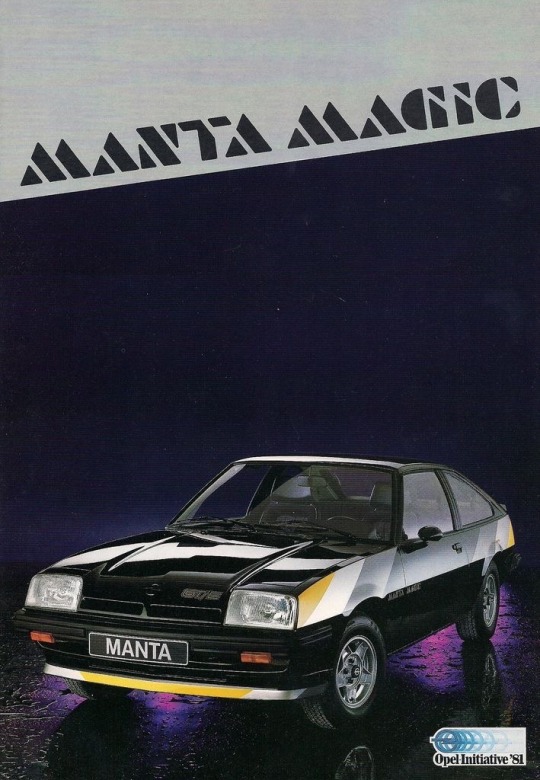
_1981
#retrowave#retro aesthetic#80s style#retro#retro style#retro tech#retro cars#80s cars#80s#80s design#opel manta#80s nostalgia#vintage retro
192 notes
·
View notes
Text
Mutig, klar, atemberaubend: Opel zeigt den komplett neuen Grandland
Stylish und dynamisch, geräumig und flexibel sowie mit einem komplett elektrifizierten Antriebsportfolio – so wird der neue Opel Grandland vorfahren.
Rüsselsheim (ots)
Vom Konzept zur Realität: Nächste Grandland-Generation nimmt Design-Anleihen am Opel Experimental
German Energy: Neuer Grandland designt, entwickelt und gebaut in Deutschland
Natürlich elektrisch: Top-SUV von Opel erstmals auf…

View On WordPress
0 notes
Photo






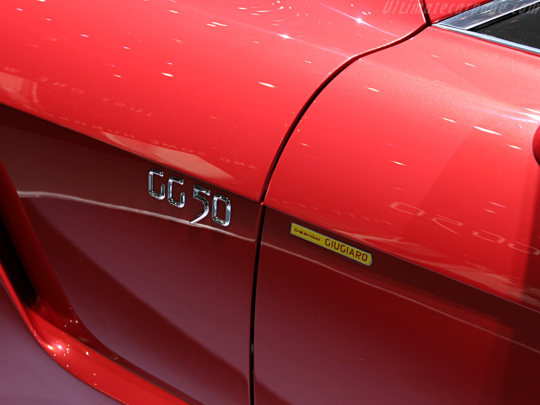
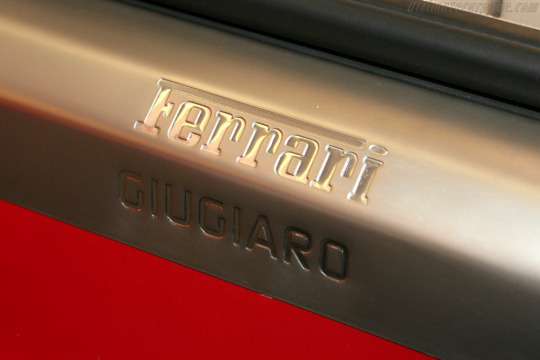
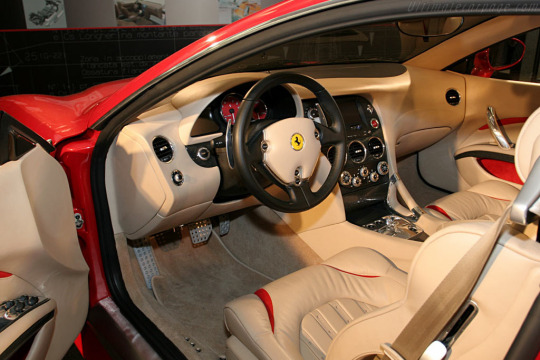
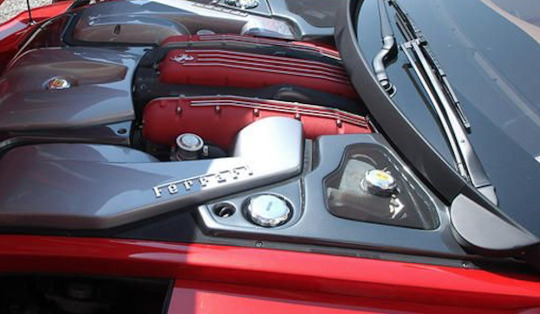
Ferrari GG50 by Giorgetto Giugiaro
Concept cars are usually made before those who go straight into production. That is the reason why they are called so. Concepts do not limit the imagination of designers, but when the car comes into production, engineers take a more important role. As a result, a lovely concept of a car can sometimes become an ugly duck.However, that is the case about Hyundai, Nissan, Opel and other manufacturers that are producing millions of cars per year. It does not include the exclusive ones – Ferrari, Lamborghini, McLaren, etc.This is a story about a car which life has been turned upside down. The production model came at first and the concept was shown off just a year after. This is a story about Ferrari GG50 – the concept car that Giorgetto Giugiaro made himself in 2005 while celebrating the 50th anniversary of creating stunning car designs.
The GG50 is based on Ferrari 612 Scaglietti series production car – a four-seater with a front engine and rear wheel drive - a true Italian prancing horse. It has a twelve-cylinder, 5,7-liter engine under the hood, which generates 540 bhp and 588 Nm. At the time, turbochargers became extremely popular, but Ferrari tried to remain as traditional as possible. However, most engines manufactured in Modena were still highly revolutionary.
Like the original 612 Scaglietti, the following concept has the same 6-speed sequential rear-mounted gearbox, Brembo brakes, and other equipment. The main difference hides is design – the place where Giorgetto feels best.
Giugiaro took the idea a year before official presentation of GG50 and received all the support from Ferrari President at that time, Luca di Montezemolo. He gave the designer just one condition: no restrictions on creativity, but the concept must keep up with Ferrari tradition.
Giugiaro started working on the concept half a year after. He did everything just like 50 years ago: sketched every detail entirely by hand, with a pencil. Finally, he created a 1:10 scale concept from four views: side, nose, tail and bird’s view. Later, the concepts were rendered in a 3D project. In April, a full-scale plaster model has been made. In June, a running prototype has been completed already! The concept has made its way from a scratch to running car in less than just five months. That’s the spirit when you’re in a hurry for your own birthday present.
Almost all technical details mentioned above remained the same except for some minor exceptions. The prototype’s wheelbase is the same, but overall length is shorter by 9 centimetres than the original 612 Scaglietti (4.81 meters vs. 4.9). The concept car is also lower – Giugiaro cut 2 centimetres of front overhang and nipped the rear by 7.
There are more differences that we cannot see from outside. For example, a modified position of the 95-litre fuel tank that created a larger boot (270 vs. 240 litres). Also, a flat platform when rear seats are lowered (and a total capacity of 500 litres). The concept is more practical, no matter how funny the word “practical” sounds when we are talking about Ferrari.
Nevertheless, there are many stories about the concept’s appeal and originality. Ferrari GG50 is a true masterpiece because of the story of its creation. A very few production cars in history can boast that they have been a base for a concept car, but 612 Scaglietti is one of them.
#Ferrari GG50#Giorgetto Giugiaro#Hyundai#Nissan#Opel#Ferrari#Lamborghini#McLaren#Luca di Montezemolo#612 Scaglietti#concept car
152 notes
·
View notes
Text



Opel Diplomat 2.8 E Cabriolet Designed by Fissore 1971.
36 notes
·
View notes
Text


Harley Earl
Harley Earl is the father of the Corvette. The Corvette was his idea pure and simple. He was influenced after World War II watching Jaguars and MG's run road-racing courses like Watkins Glen. He felt America needed its own sports car and he convinced GM to develop its own, inexpensive two-seater.
Originally code named "Project Opel", Earl kept the Corvette program pretty much to himself. He had a special small studio with a handful of people working on it. At the time, Earl wasn't sure which GM division ought to sell the Corvette, But he felt close to Ed Cole at Chevrolet and decided to give the "Bowtie Division" first shot. Cole was sold the first time he saw the prototype. He knew it was just what the stodgy Chevrolet division needed.
The Corvette debuted at Motorama in New York, January of 1953 and was an instant hit. Six months later the Corvette went into production and the rest is history. But the Corvette may not have been Earl's greatest achievement. His main accomplishment was making automotive design an institution. It was the work of Harley Earl that put the sizzle back into the American car business after World War II. His expressive designs defined an entire era. He was the first man to design a car with a wraparound windshield, cars without running boards, and the first to tantalize the motoring public with dream cars like the 1938 Y Job and the 1951 Le Sabre.
He grew up in Hollywood in the early 1900s and quickly developed designs with a flare for the dramatic. His father ran a custom coach building company, and young Harley was put to work- as Chief Designer. He would often produce clay models for customers, showing them what their future vehicles would look like. Earl later became close friends with Lawrence Fisher, who became president of the Cadillac Division of General Motors in 1925. Fisher asked Earl for some design help on the new LaSalle. His successful design caught the attention of GM Chairman Alfred B. Sloan.
Harley moved to Detroit in 1927 and quickly set about making GM one of the world leaders in design. In 1937, his Art and Color department was renamed General Motors Design Staff. Among Earl's most memorable designs are the Chevy Nomad, the Cadillac Eldorado Brougham, all of the early 1950s Buicks and of course, the Corvette. Earl's legacy, however is the Corvette which will live on as a testimony to his vision and his talent. Harley Earl died on April 10, 1969.

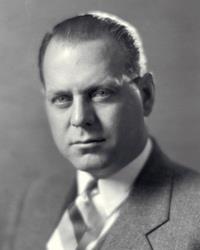
Harley J. Earl (November 22, 1893 – April 10, 1969) was the initial designated head of Design at General Motors, later becoming Vice President, the first top executive ever appointed in Design of a major corporation in American history. He was an industrial designer and a pioneer of modern transportation design. A coachbuilder by trade, Earl pioneered the use of freeform sketching and hand sculpted clay models as automotive design techniques. He subsequently introduced the "concept car" as both a tool for the design process and a clever marketing device.
Earl's Buick Y-Job was the first concept car. He started "Project Opel", which eventually became the Chevrolet Corvette, and he authorized the introduction of the tailfin to automotive styling. During World War II, he was an active contributor to the Allies' research and development program in advancing the effectiveness of camouflage.
60 notes
·
View notes
Text










Drive Your Corvette to Work Day
Many Corvette owners own other cars as well, and often only drive their Corvettes on special occasions. Corvettes are regularly driven on beautiful days or are taken to car shows, but usually aren’t used as commuter cars for work. But, today is different—today is Drive Your Corvette to Work Day. Sponsored by Mid America Motorworks, a supplier of aftermarket Corvette parts and accessories, the day has taken place since 2001. The goal is to get as many Corvette owners as possible around the world to drive their car, in order to show how popular the car is. It takes place on the Friday closest to June 30, the day in 1953 when the first Corvette came off the General Motors assembly line.
Harley J. Earl was no stranger to designing cars. He redesigned the LaSalle in the late 1920s, designed the Buick Y-Job—which is seen as being the first concept car, and also designed the GM Le Sabre. He then began working on “Project Opel,” which would turn into the Corvette. In its design, he took inspiration from the Jaguar XK120. On January 17, 1953, the Corvette was introduced at GM’s traveling Motorama display, at the Waldorf Astoria Hotel in New York City.
Later that year, on June 30, the first Corvette for consumers came off the assembly line at the GM plant in Flint, Michigan. Tony Kleiber, a worker at the plant, drove the first car off the line. The Corvette had been named by Myron Scott, a photographer for Chevrolet. After looking in the dictionary for a word that started with a “C,” in order to give the make and model phrase an alliterative effect, he found “corvette,” the name for a small warship that was fast and easy to maneuver.
At a time when most cars were built out of steel, the Corvette was the first sports car with a body made completely of fiberglass. There were only 300 built the first year, all of which were white convertibles with red interiors and black canvas tops. They otherwise used standard Chevrolet parts, such as the “Blue Flame” six-cylinder engine, and the two-speed Powerglide automatic transmission. Still, they could go from the speed of 0-60 in 11 seconds and could reach a speed of 110 mph. They had no exterior door handles, and no windows as well, just plastic curtains. They had a sticker price of $3,513, which is $32,979 in 2018 dollars. All were equipped with a $91 heater and $145 AM radio, which was added to the sticker price. 1953 models are worth much more now: the third Corvette produced was sold for 1.06 million dollars in 2006.
As of 2018, there have been seven generations of Corvettes (C1-C7). V8 engines were an option beginning in 1955, and 9 out of 10 buyers selected the option that year; all Corvettes have since been equipped with V8s. By the 1960s, the Corvette was known as America’s favorite sports car. The second generation (C2) of the car was produced from 1963-1967 and was known as the Sting Ray. One of the most popular Corvettes of all time is the 1963 model, which is unique for having a split rear window.
Corvettes have been produced in Flint, Michigan, St. Louis, Missouri, and since 1981, in Bowling Green, Kentucky, where the National Corvette Museum also is also located. There were issues when making the 4th generation of the car, thus only one 1983 model exists, and production was continued with the 1984 models. The lone 1983 model can be seen at the Corvette Museum. Years after the first Corvette rolled off the assembly line, they still are towards the top of the pack for speed and acceleration. They have also been continually produced longer than any sports car or passenger car in the world.
Drive Your Corvette to Work Day is being observed today! It has been observed the closest Friday to June 30th since 2001.
Source
#Drive Your Corvette to Work Day#DriveYourCorvettetoWorkDay#28 June 2024#Friday that's closest to June 30#National Corvette Museum#Bowling Green#Kentucky#USA#summer 2016#original photography#car#vacation#travel#engineering#Chevrolet Corvette#'Vette#sports car#tourist attraction#interior#Corvette Stingray#landmark#architecture#technology
3 notes
·
View notes
Text
This is my diary blog so I'll put whatever I want here. Growing up in a Puertorican Afro-Latino family, we were heavily involved in Ifa, Lucumi traditions. Because of that, I didn't have the same naive mysticism around it like others who left the Christian Church, especially Black Americans who find Ifa after wanting to separate from a "European Religion". I think mine is a perspective worth hearing.
I grew up hearing the stories of the Orishas, cleaning chicken feathers and blood, attending the thousand dollar ceremonies. I watched them throw Opele and Diloggun, I knew at least a good amount of the Patakis. I saw what happened beyond the curtain.
I could have been initiated, but I walked away for a reason. The "babalawo" my tia married started beating the shit out of her and my mom had to save her. It was the last straw and my mom and I walked away from the religion.
We tried to help and support my tia, but then we had to finally separate ties with her as her continual involvement in Ifa kept bringing dangerous men into our lives. She is still involved to this day. Still being taken advantage of by strange men.
That was when I started to question.
A lot of young black folk start questioning and leaving Christianity in favor of ATR because they hope they will find answers in an unapologetically black spirituality. But, let me tell you, it's more of the same shit.
Threats of hellfire are replaced with threats of angering the Orishas or the ancestors for any transgression. Babalawo demand your life savings in the name of "sacrifice" as a test to whether you're truly committed to the path. Every major decision you make, every dream, every sign, you must shell out money for divination to put you on your "true destiny". Any attempts to divine or think for yourself are "malicious trickster spirits" to replace threats of "satan" or "demons" in Christian terminology. Ask your Baba. Pay $70. Ask your baba. Pay $120. The magical Kola Nuts say you have to pay me $500 for Ebo. And if you don't complete Ebo, the Orishas will be furious and ruin your life, probably kill your cat idk.
If you're leaving Christianity because you loathe being subserviant to a wrathful, tyrannous God, you will not find solace in ATR. In many ways, it's worse. You will spend the rest of your life in poverty, shelling out every penny to ceremony, readings, Ebo, all of it. Tens of thousands of dollars.
In times of tradition, money was necessary because it went to paying for the community, opening schools, orphanages, funding farms. And babalawo ran these operations. That world doesn't exist anymore. Now, Babalawo use it as a means to pay their bills, incentivising scamming.
Animal Sacrifices were to feed the family, the community. To thank the Orisha for abundance, not to "feed" them. Now, in a world of grocery stores and refrigeration, perfectly good meat is left to rot on shrines and wasted. Slaughtering an animal without need of food is animal cruelty and I don't care who that offends.
These traditions were designed in a way that was practical to the needs of the villages of the time hundreds and hundreds of years ago. Now we perform these wasteful ceremonies designed for a world that no longer exists. Waste of money, waste of food.
Do you really think that the slaves who preserved these traditions had the money and livestock at their disposal to perform these ceremonies? These "satanic" loud, massively performative ceremonies out in the open of their Catholic enslavers while slaughtering their masters' lifestock? Hell no! They would literally be lynched. And yet somehow our enslaved ancestors found a way to preserve knowledge without money, ceremony, or even dignity.
People think just because it's not mainstream religion, that Ifa, Isese, Santeria, Lucumi, are all somehow immune to the same logic and questioning we don't spare Christianity. But ALL faiths should be questioned. ALL traditions. Or you risk being susceptible to spiritual abuse. And make no mistake, modern ATR is full of spiritual abuse. In some ways, even worse than Christianity.
And before anyone can tell me, "oh it was just a bad babalawo". No. One Babalawo is a lone instance. Five Babalawo in a row with supposedly good reputations with their community? That is a sickness in the culture itself. You think we didn't try to do our homework after the first bad encounter? Try to find a good honest elder we could trust?
Babalawo, these spiritual leaders, guides, elders that we're suppose to look for wisdom from? Listen to the way they talk to people. Cussing out and insulting anyone who questions them, tripping over their own egos. Don't believe me? You can go to r/Santeria for a little preview of how these "sacred leaders" speak. Pretty sure I watched one of them call someone a bitch last time I scrolled. No, that's not just online behavior. They are like that. I lived it and saw it. Those are the people "chosen" to be your oh-so-wise guides. The once holy title "babalawo" means nothing anymore. People who bought the title with cash but without the iwa pele, the character, to back it up. All of the money in the world and none of the inner work. It's blasphemy, but more importantly, it's embarassing. They dishonor the orishas and the ancestors who risked their lives to preserve the sacred knowledge.
Maybe you will find a good man, a kind babalawo with his heart in the right place. A REAL babalawo. I can't generalize and say there isn't a single good leader in ATR, because of course there must be. But I haven't met him. I met wife beaters, perverts, deadbeat fathers, manipulators, and scam artists. All of the most monsterous people I ever knew were priests. And in my experience? It's not worth wading through a sea of monsters to find one angel. Especially not at the cost of your life savings (and maybe even the cost of your life). And I can tell you one thing, if there is a single good babalawo out there? He is not cussing out people on internet forums.
Homophobia, transphobia, misogyny is rampant. Maybe you will be lucky enough to find a more welcoming ATR community nowadays than when I was growing up queer in the early 00s, but you will have to wade through all the crap first.
As for the divination, I have a lot of reservations for ANY religious practice that promises to find the meaning or "destiny" of your life through divination. Conveniently, the only way to receive divination is to shell out $$$. Orishas can conveniently only communicate through this singular, overly complex system of divination that is paywalled behind a Babalawo. You MUST complete whatever the divination demands (which will usually cost more $$$) or else you will anger the spirits or your problem will get worse of the orisha will punish you. Blah blah blah, empty threats of hellfire and damnation but with an African Theme.
First of all, the Orishas sound more and more like the tyrannous Christian god who will torture you in hellfire for any transgression against him. Any wrong move, any offense or taboo and they will hurt you, they will hurt your family, they will hurt your friends. So give money to your babalawo to fix this problem we made up for you. For the right price, he, and only he, can fix you. ...Sounds like my aunt's abusive ex husband.
Let me ask you something, if the answer to life and our destiny could be found in tossing shells or drawing in the sand, then why couldn't it prevent the Atlantic Slave Trade? Why couldn't it save us from European Conquerors who stole us from our home and colonized our homeland? Where were the answers then? Why does every tribe, village, and clan in Africa run by divination and fear of supertition live in abject poverty while begging USA and Europe for food and medicine? Sure you can blame some of it on colonization, but colonizers laugh while these easily manipulated people don't have the critical thinking skills to resist them. Meanwhile countries that are moving away from supertition and divination like Nigeria, or Ghana are rising as World Powers in their own right.
That sounds callous, that sounds cruel, that sounds insensitive as fuck but I need to drive home how fucking poisonous superstition and overreliance on divination is. We (black and latinos) already have issues with poor education in our communities. High drop out rates, poor underfunded schools, low college enrollments, poverty. And now you want to further poison our already struggling communities by adding superstitious fuckery to the mix? I can already hear our white masters are laughing at us from beyond the grave.
There is nothing wrong with the occasional tarot reading or astrology as a little spiritual comfort or advice. But relying on them for your life path? No divination method will find the answers to your problems. You will NOT find the answers to your life or destiny in shells and sand. It is NOT something you can buy with money.
The Orishas are not wrathful tyrants. They are our mothers and fathers, here to guide and help you. They won't harm you for asking them for advice or giving offering without a Babalowo. That is just religious spookism there to control you and control your money, and make no mistake, it is a form of spiritual abuse. But the Orishas will not give you the answers either. ATR loves to famously say the Orishas will never speak to you through tarot cards, or any other oracle outside tradition, but wait till I tell you they won't speak to you through seeds or dead snails or magical chains either. Blasphemous, I know. But, just because it's ancient tradition, doesn't mean it's right or correct to follow. Blood letting was an ancient practice too. So was drinking mercury. Live in the present.
The Orishas speak to you when you embody their lessons in your life. When you walk as they did and learn from their wisdom and their mistakes. They live in you. Not in silly statues you get from thousand dollar ceremonies. They don't speak through anyone or anything but your own Ori. Your crown. What Orisha has your head? They all do. They're not fucking hogwarts houses to sort yourselves in. They are all there to guide you at various stages and events of your life. They are the embodiments of the human experience, and they live within you. If you connect with a particular Orisha? Embody them. Learn from them.
When the Orisha live in you, you honor them by taking care of your mind and body.
If you have thousands of dollars and time and energy to spend on ceremonies and rituals, then you can afford to go to school and get a fucking education. If you have thousands of dollars, you can afford books in science, philosophy, and mathematics. Knowledge you won't find tossing dead snails on a mat.
If you have thousands of dollars to spend on ritual, you can afford a healthy diet to nourish your body. You can afford a gym membership. You can afford a therapist and regular doctor visits.
If you have the time and devotion to spend ritual? Put it to better use volunteering for your community. Honor Ochosi by volunteering at an animal shelter or honor Oshun by volunteering to clean up your local rivers.
Your job is to learn and grow throughout your life and come to decisions with the brain Obatala tirelessly sculpted and put in your head, not look for answers in shells and seeds. Money and superstition will never replace lessons and experience. You are meant to live your life, get hurt, and grow. You must bleed and suffer for your wisdom. That is real sacrifice. It doesn't happen at an altar. Knowledge and wisdom is not given. It is earned. You cannot buy it. You are not meant to know the answers. You are doomed to carry your own cross. Stop looking for shortcuts.
When my mother and I did things the "right" way. Through tradition and ceremony, our lives were nothing but pain. And of course they were. Our lives were being run by predatory men, lusting over our money and bodies.
It was when I walked away that I found peace within myself and with the Orishas. And I continue to honor them independently outside ATR (the real Orishas, not the spiteful spirits that need to to feed off blood and money that ATR loves to paint them as. I see that as an insult to them in its own right). I really don't give a damn about what anyone has to say about me not "doing it the right way" or no going through the "proper procedures". I had more than my fill of that cult. And if you’re here to tell me the beings I’ve been praying to, who have been giving me blessings and watching over me is some malevolent spirit, please keep your mystic spookism bullshit to yourself. Please go find someone else more gullible than me to intimidate.
I'm never going back, but nor am I walking away from the Orishas that have been there for me since I was small. And if they are dieties worth having in my life, then they will understand why I will never initiate or have anything to do with those practices again. I never want to speak to another ATR priest as long as I live. I've suffered enough.
I would never let anyone I love or care about get involved with ATR. Ever. When my friends find out about my past with Ifa and ask if they should get involved, I always tell them to run the fuck away.
Any diety, orisha, god, that threatens to harm you for any reason is not a diety you should follow or worship. Period. So either the Orishas are kind and patient like a parent should be to a child, or they are abusive and unworthy of worship. I choose to believe they are kind, otherwise I would not follow them. So far, in the decade or so since I have been honoring them, praying to them, they have not harmed me. Nor will they ever. Because they are not monsters.
Atheists live closer to the divinity of the Orishas than any priest, babalawo, santero, or iyanifa. I believe everyone should walk the path of an Atheist before coming into spirituality. When you live a life of logic and knowledge, it's easy to see through the bullshit. Being good and kind for goodness sake, not under threat of divine retribution. I don't care who that hurts, I don't care who that offends. All organized religion is corruption, no matter where it comes from.
Ase!
3 notes
·
View notes
Text
IO PROG ECU programmer,the Only ECU Clone Tool for GM/Opel
IO PROG ECU Programmer is a software and hardware solution designed for work with a great number of ECUs, automatic transmissions,BSI modules

15 notes
·
View notes
Photo
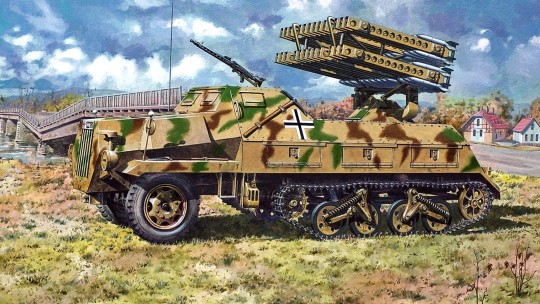
1944 10 Silesia SS Maultier 8cm Raketen-Vielfachwerfer - Taras Shtyk
Sd.Kfz. 4/1. (8cm) Raketen-Vielfachwerfer auf Panzerwerfer 42, (SS-122181), unknown unit "Waffen-SS" area Breslau, Silesia, autumn 1944.
repost improved colors
At the end of 1941 German military commanders were staggered by the first use in battle of the Soviet BM-8 and BM-13 'Katyusha' rocket launchers, and demanded a similar machine from weapon developers for the requirements of their own army. After less than a year of testing the Sd Kfz.4/1 Panzerwerfer 42 joined the armament of the Wehrmacht. It featured a ten barrel 158mm caliber rocket launch system designed by Rudolf Nebel, mounted on the chassis of the well-known Opel Maultier halftruck
This vehicle soon showed itself to be a very effective weapon it even surpassed its Soviet predecessor in accuracy of firing. However, the handling of the 158mm rounds was also associated with many difficulties, not least due to the large caliber of the rockets. To provide the combat units with the necessary amount of ammunition during battle they even had to devise special transporters which carried additional 158mm rockets for the rocket launchers.
At the end of 1943 in the SS Troops Academy research center in the city of Brunn another type of rocket launch system was developed, although it would be difficult to call it fundamentally new. Evidently, the simplicity and lightness of the design of the Soviet M8 82mm rocket impressed the designers. The German equivalent was a close copy of the Soviet design, except for the method of fastening of the stabilizing fins to its body - they were angled in such a way that the rocket made a spinning motion when fired. Clearly, rockets with tail fins could not fire from a tubular-type launcher, as in the previous Panzerwerfer 42, and that is why the designers again followed the Soviet example using rail guides made out of a flange beam.
A pre-production model was fitted with 48 rails bearing 96 rockets, but such a construction appeared to be too bulky. On production machines only two rows were fitted, with 12 guide rails each, i.e. a single firing volley consisted of 48 rockets.
The first machines arrived at the Front in 1944 and initially they were used exclusively by SS units. German soldiers gave the nickname of 'Himmler Organ' to these machines, because of the unique noise heard during rocket firing (by analogy with the nickname for the Soviet machines, 'Stalin Organ').
In comparison with the Soviet 'Katyusha' the German 8cm launch rocket systems had a greater efficiency and accuracy of firing, but they yielded considerably to the Panzerwerfer 42 with 158mm caliber charges, and that is why these machines had very limited battle usage and were built in negligible quantities even compared with the 158mm Panzerwerfer 42, which in turn was built in far smaller numbers than the Soviet 'Katyusha'. Some of these machines were used in defensive battles on the territory of Germany in 1945, however such cases were exceptional, and this particular weapon type never gained regular use.
28 notes
·
View notes
Text
Opel Astra G, 25 yaşında
Opel, 1991 yılında Astra F’yi Opel Kadett’in varisi olarak tanıttı. Bu, şirketin kompakt sınıftaki başarı hikayesinde yeni bir dönemin de başlangıcı oldu. 1998 yılında lanse edilen takipçisi, öncüsünün başarısını
(more…) “”

View On WordPress
#Astra#Astra L#Opel#Opel Astra#Opel Astra G#Opel Design#Opel Türkiye#Opel Vizör#OpelTR#PSA#Pure Panel#Stellantis
0 notes
Text




Opel Aero GT, 1969. Opel made two targa top version of their GT but never put the removable roof version into production. Some owners have converted hardtop GTs
#Opel#Opel Aero GT#concept#design study#targa#targa top#open roof#General Motors Europe#Opel GT#1969#prototype
424 notes
·
View notes
Text
Why Folks Do Not Watch the Academy Awards


I haven't watched in years but John Cena walking out on stage somewhat "butterball naked",to announce the nominee's in the "costume design" category has folks bringing up "Hollywood's Illuminati" and "Human Rituals" once again.

Even if this was a "publicity stunt" for his current movie,I think we've seen enough "stuff" from promos from last summer,to know if you would be interested in even watching it.


1974 Academy Awards Streaker
youtube


And he's dressed up in women's clothing before for SNL.


We see you John Cena, c'mon now 🙄
Monday
03.11.2024
L.George
6 notes
·
View notes
Text

The sensibility that has been honed at many circuits is now running.
The sports line racing wheels used by the BMW factory team M3 in the BBS European touring car races are the brand that men who challenge the limits of driving on the battlefield of the circuit have absolute trust in. It has won many awards for its superior functionality and superior quality. The RN" and RY" wheels of the New Sports Line are the feedback of this attention-grabbing design to general vehicles. The RN is a one-piece wheel with a new round rim. The RY is a two-piece wheel with an integrated rim structure. Please experience the wonderful matching with the car and the drivability.
RA
We have set a drastic price so that many drivers can enjoy our commitment to BBS technology. Uncompromising design, manufacturing and perfection. And the stubborn quality control is exactly what the BBS brand deserves.
By adopting the new mechanism "Multi Fitment-Systems" (mutual adaptation system), it is just right for each car model
We will fit you. Please specify each applicable version when purchasing.
VW version All GOLF cars. Comes with green adapter for BORE 57
Toyota version Toyota and Mazda vehicles With yellow adapter for BORE 54
Nissan version nissan car. Comes with blue adaptor for BORE 59
Honda version honda car. With red adapter for BORE 56
Opel version Astra Vectra With black adapter for BORE 56.5
Other accessories include emblem and air valve (bolts and nuts are not included)
16 notes
·
View notes
Photo

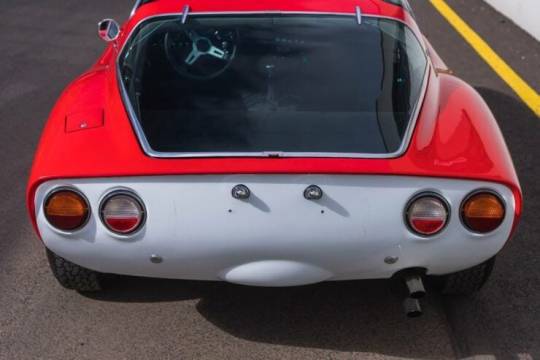








Bizzarrini 1900 GT Europa (1 of 12).
The Bizzarrini 1900 GT Europa is a lightweight sports car that was built by the Italian automaker in the late 1960s in very limited numbers – just 12 were made in total and the car you’re looking here is the last one manufactured before the factory shut down.
Giotto Bizzarrini, the mastermind behind the Bizzarrini 1900 GT Europa, was an accomplished engineer and designer. Before starting his own company, he worked for several prestigious Italian automakers, including Alfa Romeo, Ferrari, and Iso Rivolta.
The Bizzarrini 1900 GT Europa was a significant milestone for the company, as it was their first affordable production model. It was a smaller, more attainable counterpart to the Bizzarrini 5300 GT Strada. The Europa was powered by a 1.9 liter Opel inline-four cylinder engine, which delivers a respectable 110 horsepower.
With a top speed of 128 mph and a 0-60 time of 10.5 seconds, the Europa offered drivers an exhilarating driving experience thanks in no small part to the impeccable engineering experience of Giotto Bizzarrini. The car was developed with independent front and rear suspension, a front-mid-mounted engine, four wheel disc brakes, a limited slip differential, an integral roll bar, and a well-balanced chassis that was more than a match for its competition in the late 1960s.
The 1900 GT Europa’s distinctive design was a collaboration between Giotto Bizzarrini and the talented young Italian designer, Pietro Vanni with ample influence taken from the Bizzarrini 5300 GT. The final body shape was honed in the wind tunnel at Pisa University in order to get it as aerodynamically efficient as possible.
The Europa was notable for its low-slung profile, aggressive lines, and a minimalist cockpit designed with racing in mind. Its distinctive design language captured the essence of Italian sports cars in the 1960s, embodying elegance, performance, and outright speed.
#Bizzarrini 1900 GT Europa#Giotto Bizzarrini#Alfa Romeo#ferrari#Iso Rivolta#Bizzarrini 5300 GT Strada#Pietro Vanni
80 notes
·
View notes